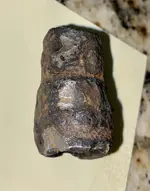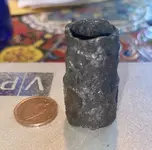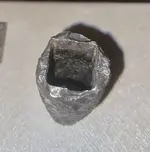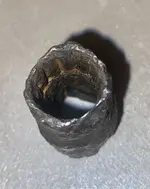Dougie Webb
Sr. Member
- Joined
- Jun 14, 2019
- Messages
- 402
- Reaction score
- 704
- Golden Thread
- 0
- Location
- Stone Mountain, Georgia
- Detector(s) used
- Fisher F5
Garrett Ace 200
- Primary Interest:
- Metal Detecting
I've already found several primitive/hand-made tools and nails near the site of an old mill in our neighborhood. Pulled this one out yesterday - looked like a rock. Tumbled it overnight and then electrolysis all day. I appear to have a hand-made (?) 1/2 socket with a 1/2 drive. I can't make out any maker's mark. Not sure if that's because it just that corroded or because it's just that primitive. Anyway, this made my day! Thanks for looking!
After tumbling and before electrolysis:

After electrolysis:



After tumbling and before electrolysis:

After electrolysis:



Upvote
10




![J.H. Williams, The SuperCompany [Page 3] (1).webp J.H. Williams, The SuperCompany [Page 3] (1).webp](https://www.treasurenet.com/data/attachments/1732/1732064-9747520b26a1b6434c3b30bef3545d0f.jpg?hash=9Xk6J2-WW8)
